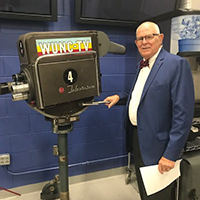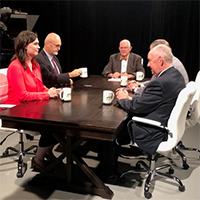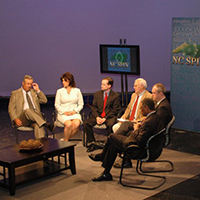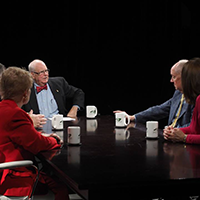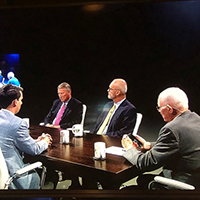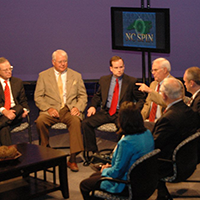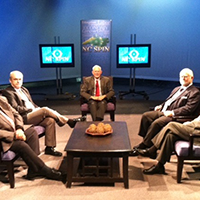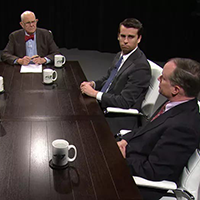Are public schools failing us?
Published July 31, 2025
By Tom Campbell
For decades we have been told our public schools are failing. It comes largely from those on the conservative right. They are so adamant, so loud and so frequent that they have swayed public opinion. Pew reports 51 percent say the country’s k-12 education system is generally going in the wrong direction. Only 16 percent say it is right. What is behind these claims and are they factually accurate?
Agree or disagree, but this goes all the way back to 1954 and the Brown v. Board of Education Supreme Court decision. Conservatives disagreed with having to integrate public schools. North Carolina went to the extreme of passing “The Pearsall Plan,” which provided that the state would pay private school tuition grants to parents whose children were assigned to integrated schools they didn’t want to attend. It also gave local school districts the authority to hold a referendum on whether to close its schools if faced with pressure to integrate.
A federal court declared Pearsall unconstitutional. But it required the 1964 Civil Rights Act, that denied federal education funds to districts not integrated, before school doors were really opened. Some still don’t like their children to go to school with other races and nationalities.
They give them vouchers to attend private schools. The facts are undisputable: most students receiving school vouchers are white, middle- to upper-income children who attend predominantly white, largely religious schools. Resegregation lives!
North Carolina schools have long struggled with student outcomes. For years we jokingly said, “Thank God for Mississippi,” because their schools ranked dead last. But in the 1980s, we made major efforts to improve, and our rankings rose dramatically. Some gains have declined recently for a variety of reasons.
The “proof” often given that our schools are failing is largely based on test scores from NAEP (National Assessment of Education Progress), often called “the nation’s report card.” It reports that 69 percent of North Carolina’s fourth graders do not read at a “proficient” level. U.S. Secretary of Education, Linda McMahon, said, “When 70 percent of 8th graders in the U.S. can’t read proficiently, it’s not the students who are failing — it’s the education system that’s failing them.”
But, as John Adams said, “facts are stubborn things,” and the facts don’t support those claims. They are misleading, even outright false. Paul Thomas, professor of Education at Furman University, in his book, “How to end the reading war and serve the literacy needs of all students,” helps set the record straight.
NAEP tests students in math and reading, reporting scores in three categories: basic, proficient and advanced. According to NAEP, those students performing “at or above the proficient level demonstrate solid academic performance and competency over challenging subject matter.”
Here’s where the confusion comes in. 45 of the 50 states do not use that language in their assessment standards. Most all of them judge “grade level” reading proficiency that actually correlates with NAEP’s “basic” category. So, the actual scores for our state indicate that 58 percent read at the basic or grade level. Now we needn’t be satisfied with just 58 percent, but this is a far cry from believing 69 percent are failing.
Thomas suggests that a better way of scoring would be to measure results by age level: “below age level,” “age level,” or “above age level.” That would certainly help us better judge how our students are performing.
Don’t get me wrong. There are plenty of problems with public education and we won’t proclaim our schools are overwhelming successes. We can identify some failings. North Carolina is failing to adequately fund traditional k-12 education. We are also failing to attract the best and brightest to our classrooms by refusing to pay teachers adequately, to treat them with respect or give them the support they need. We have failed to provide rules and regulations that promote excellence, too often trapped by achieving societal outcomes over educational outcomes. We have failed to deal with chronic behavioral problems, absenteeism or cell phones. Further, we have not properly implemented new technologies to prepare students for their future lives. Finally, WE, the public, fail to promote and support our public schools as we once did.
But the biggest failing is that our public leaders (mainly legislators) have essentially thrown in the towel on traditional public schools, all in the name of “school choice.” Our state is giving $400 million to private schools; allowing them wide leeway into choosing who they will teach, the course of study they choose, and, while they are required to administer nationally standardized tests, they aren’t required to report those results. Essentially, we just write the check and walk away. Who is failing whom?
We need to stop running down public education and return to times when we cherished and supported its value, at time when we pulled together to make our schools better.
Tom Campbell is a Hall of Fame North Carolina broadcaster and columnist who has covered North Carolina public policy issues since 1965. Contact him at tomcamp@ncspin.com
